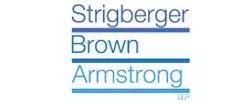A Form 1, or Assessment of Attendant Care Needs, contains three parts/levels of attendant care. For each part/level, a particular hourly rate is assigned which is used to calculate an insured persons monthly attendant care needs. The hourly rate used in the Form 1 is governed by the applicable Superintendent's Guideline.
In August 2017, the LAT released the decision of AH v. Belair Direct Insurance (2017 CanLII 56675 (ON LAT)). While this decision addressed various treatment plans, the main focus of this case was attendant care. The Adjudicator considered the invoices submitted to claim attendant care and found that the service provider did not provide the level of detail for each item as is normally indicated on a Form 1. Rather, only a general description of care was provided, which was essentially the same from month to month. The Adjudicator also noted that the service provider invoiced her services at the rate of $35.50 per hour. The Adjudicator concluded that the service provider did not provide a "proper breakdown of the levels of care provided and invoiced over and above the FSCO ACB Guideline". The Adjudicator then went on to perform her own calculation of the services payable using the hourly rates set out in the Form 1 and Superintendent's Guideline.
Overall, the "take away" from this case was that a service provider should only be charging the hourly rates outlined in the Form 1 for the services provided under each part/level of care.
This decision was controversial and caused some confusion in the industry.
In response, FSCO released a new Attendant Care Hourly Rate Guideline (Superintendent's Guideline No 01/18) in April 2018. The accompanying Auto Bulletin (No. A-03/18) confirmed that the Guideline had been revised "to require that the maximum hourly rates set out in the guideline be used with the Assessment of Attendant Care Needs (Form 1) to calculate the monthly attendant care benefit". This Bulletin also notes that "Previous guidelines could be interpreted to strictly apply the maximum hourly rates as the maximum payable for attendant care services, rather than using the hourly rates to calculate a monthly benefit as was originally intended."
This new Guideline and Bulletin clarify that the hourly rates used in the Form 1 are merely a tool used to calculate the total amount of attendant care payable per month and is not intended to dictate the actual hourly rate that may be charged by a service provider for the care provided.
It is worth noting that, while this new Guideline technically only applies to accidents that occur on or after April 14, 2018, Adjudicators may find it persuasive when assessing attendant care claims arising from accidents that occurred prior to that date.
See Bulletin here.
The content of this article is intended to provide a general guide to the subject matter. Specialist advice should be sought about your specific circumstances.

